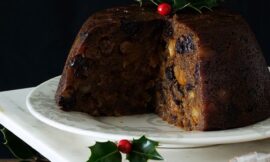PRINCIPLE OF FOOD STORAGE The fundamental principle in the storage of food is to keep it clean, cool and covered. Periodical inspection is a must, and there should be a regular turnover of goods.
Daily cleaning, weekly cleaning and spring-cleaning are necessary to keep food free from dust and dirt. Access to food stores must be restricted.
No food should be kept in the kitchen or larder, apart from what is required during the day. The storage room should be dry, well-lit, ventilated, vermin-proof and clean.

Principles of food storage
Cupboards and shelves should be of simple design without duat call Cupboardamentation, unecessary ledelf to be ele gors should be so designed as to enable the whole shelf to be clearly visible and sedible when doors are opened.
Shelves must be constructed fod specific purposes. They should be so fixed that they could be easily taken down and re-erected to facilitate regular and thorough cleaning.
They should be narrow enough to enable all the goods to be easily accessible Wide wooden shelves should not be made of planks which are joined, tongued or grooved but of 5 cm. x 1.25 cm.
(2″x1/2″) slats laid with a clearance of 3.75 cm. to 5 cm. (1½” to 2″) between each slat.
The one nearest to the wall should have a return board to form a lip. The back of the lip should be at least 5 cm.
FOOD SAFETY PRINCIPLES
(2″) from the wall, to leave room for the cleaning of the wall. Corners must be rounded, particularly where shelves on two walls meet at a corner, to avoid an uncleanable dust trap.
As far as possible avoid having shelves above windows, Special shelving covered with marble, hard stone or tiles should be set aside for such materials as fat.
One part of the shelf should be set aside for glass receptacles. No foodstuff, even when in bins, boxes or cartons, should be stored directly on the floor.
The bottom shelving should be at least 75 cm. (26″) above the floor. Containers for food should be provided, the nature of the foodstuff determining the nature of the receptacle required.
These should be smooth, impervious, easily cleanable, resistant to wear, denting, buckling, pitting, chipping, cracking and should withstand penetration by vermin, and the corrosive action of foods and cleaning compounds.
Stainless steel, monel metal, vitrified china, glass or plastic should be used for moist unpackaged food or beverages, and galvanized steel for dry packaged and unpackaged foods.
Food safety
Solder must be nontoxic, and welded areas must be as resistant to corrosion as the parent metal. Food containers should stand clear of walls, should be kept scrupulously clean and unless the articles they contain are naturally wet, should be completely dry, both inside and outside. Segregate food to be used promptly from the food that is to be held
for some time. Use food in the order of priority-first in, first out.
Stocks should be inspected once a week. A stock list should be made to tick off inspection dates and to indicate conditions. Keeping food clean not only means keeping it free from visible dirt,
but also keeping it in such a way as to prevent the multiplication of germs. High temperature kills them, and freezing preserves bacteria in suspended animation. Hence food should be kept cool and dry Perishables should be kept under refrigeration or,
when no refrigeration is available, in the larder in closed containers or adequately protected with muslin or wire covers. Windows and doors should have fly-proof meshing.

